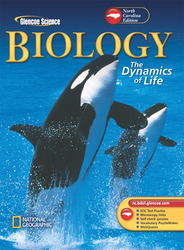1 A) Heterotrophs B) Abiotic factors C) Ecosystems D) Niches 2 A) Mutualism means that one member of a species thrives at the expense of the member of the species. Parasitism means that one member of a species thrives at the expense of the member of the species. B) Mutualism means both members of a species benefit from living together. Parasitism means that one member of a species thrives at the expense of the member of the species. C) Mutualism means that one member of a species benefits without harming or benefiting the member of another species. Parasitism means that both species' members benefit from the relationship. D) Mutualism mean that both members of a species benefit from living together. Parasitism means that one member of a species benefits without harming or benefiting the member of another species. 3 A) Ecologists never study animal in Earth's biosphere. B) Living things in Earth's biosphere are affected by nonliving things. C) Earth's biosphere includes the portion of Earth within 1 mile of the surface. D) The physical environment of Earth's biosphere is the only factor in influencing living things. 4 A) herbivores B) producers C) carnivores D) scavengers 5 A) carnivores B) producers C) herbivores D) decomposers 6 <a onClick="window.open('/olcweb/cgi/pluginpop.cgi?it=gif::::/sites/dl/free/0078675642/181857/ch2_0_a.gif','popWin', 'width=NaN,height=NaN,resizable,scrollbars');" href="#"><img valign="absmiddle" height="16" width="16" border="0" src="/olcweb/styles/shared/linkicons/image.gif"> (4.0K)</a> A) There is no food production happens at 10º C. B) Food production at 40º C is about 5 mg of glucose per hour. C) Food production is the greatest at about 30º C. D) Food production is the smallest at about 20º C. 7 A) rotting log B) human skin C) garden plot D) volcano site 8 A) magnesium B) hydrogen C) sodium D) carbon 9 A) Lions are decomposers and bears are carnivores. B) Black vultures are scavengers and grasshoppers are herbivores. C) Fungi are omnivores and squirrels are scavengers. D) Owls are herbivores and bees are decomposers. 10 <a onClick="window.open('/olcweb/cgi/pluginpop.cgi?it=gif::::/sites/dl/free/0078675642/181857/ch2_0_a.gif','popWin', 'width=NaN,height=NaN,resizable,scrollbars');" href="#"><img valign="absmiddle" height="16" width="16" border="0" src="/olcweb/styles/shared/linkicons/image.gif"> (4.0K)</a> A) Food production drops drastically as temperatures increase beyond 20º C. B) Food production stops as temperatures increase beyond 20º C. C) Food production remains the same as temperatures increase beyond 20º C. D) Food production continues to increase as temperatures increase beyond 20º C. 11 A) parasitism B) predation C) mutualism D) commensalism 12 A) An organism B) A biosphere C) A population D) An ecosystem 13 A) phosphorous B) carbon C) calcium D) nitrogen 14 A) In a pyramid of numbers, the population size usually gets smaller as the trophic level increases. B) The law of conservation, which can be applied to the pyramid of energy, means that energy is constantly created and destroyed. C) In a pyramid of energy, only about 40% of the energy at one level is available for the next trophic level. D) In a pyramid of biomass, the weight of a lower trophic level is the same as the level above it. 15 A) an omnivore B) an autotroph C) a heterotroph D) a carnivore







